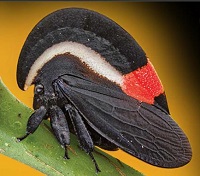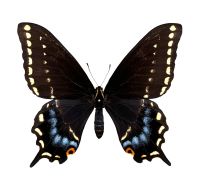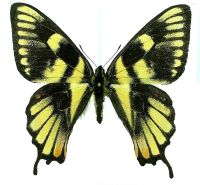-
Trehopr1

- Global Moderators

- Posts: 1053
- Joined: Thu Mar 31, 2022 1:48 am
Re: Is Morpho cypris being reared commercially?
by Trehopr1 » Sun Aug 25, 2024 10:17 pm
The inherent problem with producing anything for sheer numbers and a tireless market is that all of a sudden something that was moderately expensive (or just plain expensive); all of a sudden takes a nose dive in price and in value !
The males of this fabulous species are right now fetching about $90 retail or more. There are 6 subspecies of it and some such as aphrodite and bugaba which are far less encountered and (most desired) are relatively scarce and are more like $110 - 150 a piece.
Certainly some species are likely difficult to raise and certain species we may have very little knowledge of in general.
Morpho didius now seems to be the species produced for greater consumption. It replaced M. menelaus many years ago as that species was for quite a long time the go to species for all sorts of framing and butterfly artwork.
So, in short I think it's all about holding the value that morphos do. They still remain wildly popular to both true collectors as well as those who just want a very attractive framed butterfly in their office or home.
I'm sure a true morpho specialist would have something more to say about this species in particular but, I think the reason I have given is very plausible.
-
evra

- Posts: 44
- Joined: Fri Nov 04, 2022 9:21 pm
Re: So, what's on your spreading board ?
by evra » Sun Aug 25, 2024 10:09 pm
The squash vine borer lure from Great Lakes IPM is really effective at attracting both of them in August. It also works on Euhagena emphytiformis, but that flies in October. I think that species feeds on Gaura, which is even more common throughout a lot of Arizona at elevations of 4000-7000'.
Like most clearwings though, without the lure it's pretty hopeless.
-
Papilio_indra

- Posts: 34
- Joined: Thu May 26, 2022 3:03 pm
Is Morpho cypris being reared commercially?
by Papilio_indra » Sun Aug 25, 2024 9:32 pm
-
Trehopr1

- Global Moderators

- Posts: 1053
- Joined: Thu Mar 31, 2022 1:48 am
Re: So, what's on your spreading board ?
by Trehopr1 » Sun Aug 25, 2024 9:04 pm
Eichlinia (Melittia) gloriosa which I first encountered
in a friend's collection some 5 years ago.


As you can see by the data the specimen was taken
in Kiowa Co., Kansas.
-
Trehopr1

- Global Moderators

- Posts: 1053
- Joined: Thu Mar 31, 2022 1:48 am
Re: So, what's on your spreading board ?
by Trehopr1 » Sun Aug 25, 2024 8:41 pm
Thank you both for your replies regarding the picture of 58chevy's squash fine borer species. I knew immediately when I saw those two specimens pictured that they were NOT Eichlinia curcurbitae based on their size. At the time, I just could not come up with the species name from memory.
I first found out about E. gloriosa through pure happenstance. About 5 years ago a collector friend contacted me to come out and see a portion of a western collection that he had purchased. While we were looking through all of the wonderful material I spotted a singular specimen of E. gloriosa which was unmistakably bigger than any squash vine board type moth I'd ever seen.
I made sure to take two pictures of the specimen. I will post the two pictures of the specimen which I saw in my friends collection very shortly....
-
adamcotton

- Global Moderators

- Posts: 840
- Joined: Tue Mar 22, 2022 12:24 pm
Re: The giant N.A. antlion species Glenurus gratus (Say)
by adamcotton » Sun Aug 25, 2024 4:52 pm
Adam.
-
vabrou

- Posts: 143
- Joined: Mon May 23, 2022 11:22 am
Re: The giant N.A. antlion species Glenurus gratus (Say)
by vabrou » Sun Aug 25, 2024 3:53 pm
for G. gratus, Hagen (1861) reported length base to wingtip 52 mm, and wingspan 94 mm (=3 5/8 inches). No doubt a more generous wingspan study is warrented.
-
adamcotton

- Global Moderators

- Posts: 840
- Joined: Tue Mar 22, 2022 12:24 pm
Re: The giant N.A. antlion species Glenurus gratus (Say)
by adamcotton » Sun Aug 25, 2024 3:11 pm
Adam.
-
58chevy

- Posts: 421
- Joined: Mon May 23, 2022 5:58 pm
Re: So, what's on your spreading board ?
by 58chevy » Sun Aug 25, 2024 2:47 pm
-
vabrou

- Posts: 143
- Joined: Mon May 23, 2022 11:22 am
The giant N.A. antlion species Glenurus gratus (Say)
by vabrou » Sun Aug 25, 2024 2:46 pm
- Attachments
-
- Fig. 1. Glenurus gratus.jpg (58.13 KiB) Viewed 124 times
-
vabrou

- Posts: 143
- Joined: Mon May 23, 2022 11:22 am
Re: So, what's on your spreading board ?
by vabrou » Sun Aug 25, 2024 2:18 pm
- Attachments
-
- species names.jpg (182.99 KiB) Viewed 291 times
-
- adults 9-16.jpg (167.32 KiB) Viewed 291 times
-
vabrou

- Posts: 143
- Joined: Mon May 23, 2022 11:22 am
Re: So, what's on your spreading board ?
by vabrou » Sun Aug 25, 2024 1:28 pm
Regarding Melittia cucurbitae, the genus name was revised in recent years to Eichlinia. I have run clearwing moth traps 24-hours daily and non-stop since 1968 until 2024 , logging 32,500,000 trap hours just using semiochemical lures alone, and I have never captured a single specimen of any Eichlinia species using these hundreds of different semiochemicals singly or in any various percentage combinations.
Knudson & Bordelon (2010?) listed five species of this genus in Texas, but this species only from a single county in NE Texas. E. cucurbitae has no doubt been reported from various locations in N.A. but some were actually the differently marked E. calabaza which is found broadly across eastern Texas. K&B also listed these other species of the genus Eichlinia for the state of Texas: E. snowii, E. grandis, E. gloriosa and E. magnifica. Though most of these apparently captured by hand netting and not using semiochemicals.
My small series of E. cucurbitae captured in Louisiana were captured using hand netting near the larval foodplants, and a single female taken in one of my numerous dozens of automatic-capture light traps operating for the past 55+ years.
Here pictured is that single light trapped captured female taken 11-23-2007 near Abita Springs, Louisiana, USA. We have been operating clearwing moth traps across Louisiana using semiochemical lures every year since they became available to us in 1975 until today 2024.
So you can appreciate the extent of our self-funded research involving clearwing moths, I have also attached listings of the hundreds of traps and lure identities we used in just one 26-month study of the clearwin g moths of Caddo Parish, Louisiana. This kind of CW moth semiochemical research has occurred non-stop over the past 49 years across Louisiana.
and Trehoppr1, In the USA, the largest species is E. gloriosa, not E. cucurbitae. E. snowii is the smallest of the genus. Most, if not all members of this CW moth genus occurs also into Mexico. Sorry I don't have a more exhaustive answer about these, but I collect all insects and need to sleep some times.
- Attachments
-
- 2019 -87 trap-lure identities jpg.jpg (267.22 KiB) Viewed 298 times
-
- 2018g.jpg (736.12 KiB) Viewed 298 times
-
- 2011-11-23_19-24-50_-_DSCF0009-removebg-preview.png (224.04 KiB) Viewed 298 times
-
58chevy

- Posts: 421
- Joined: Mon May 23, 2022 5:58 pm
Re: So, what's on your spreading board ?
by 58chevy » Sat Aug 24, 2024 11:41 pm
-
Trehopr1

- Global Moderators

- Posts: 1053
- Joined: Thu Mar 31, 2022 1:48 am
Re: So, what's on your spreading board ?
by Trehopr1 » Sat Aug 24, 2024 9:48 pm
Those are all very nice indeed and I have only seen 3 of them as repeats whilst the others are new to me.
In the last drawer picture I see that you captured what appears to be the largest squash vine borer species. I forget it's scientific name off hand but, it is the largest species found in the plains states. It is also said to be rather rarely encountered so perhaps it is localized where it may be found ? Are yours from Texas ?
Also a very nice drawer full of Citheroninae !
Always a pleasure seeing what other people have found in their enjoyment of the hobby.
-
boghaunter1

- Premium Member - 2024

- Posts: 281
- Joined: Mon May 23, 2022 7:16 pm
Re: So, what's on your spreading board ?
by boghaunter1 » Sat Aug 24, 2024 4:44 pm
We had a discussion of this not long ago, but... certain butterflies do look better with a larger lower wing gap... like some of the swallowtails - Birdwings, Bhutanitis, Parnassians (where drawing up the hindwings will hide some of the nice red spots) & some others. I just leafed through the amateur hobbyist collectors' bible, "Encyclopedia of the Butterfly World" by P. Smart & "The Moths of Am. North of Mexico 20A, 20B - Saturniidae (by D. C. Ferguson) & Sphingoidea 21 (by R. W. Hodges)" . The majority (not all) have the hindwings of the butterflies & of the moths drawn up neatly to only a narrow gap/"V" between the wings. Mounting style is a personal choice... each to their own. I see so many rare, beautiful leps (online & even here on this site) with huge (Japanese style?) gaps... &... yes I cringe!... again, my opinion only... everyone can do as they like...
John K.
-
adamcotton

- Global Moderators

- Posts: 840
- Joined: Tue Mar 22, 2022 12:24 pm
Re: So, what's on your spreading board ?
by adamcotton » Sat Aug 24, 2024 8:58 am
I think you mean that the hindwings are NOT placed too low when spreading, it that correct?boghaunter1 wrote: ↑Fri Aug 23, 2024 11:33 pm almost all have little/no... cringy... (my opinion ONLY)... huge, unexplained V's left between the outer edges of the wings
Adam.
-
MikeH

- Posts: 71
- Joined: Sun Jun 12, 2022 11:37 pm
Re: Why Giant Swallowtail so prevalent in Ontario CA and NE?
by MikeH » Sat Aug 24, 2024 1:04 am
Insect collecting bias in Arizona with a preliminary checklist of the beetles from the Sand Tank Mountains
https://bdj.pensoft.net/article/101960/ ... 2/8268698/
When I look at inaturalist data to try to get a more true view of how common things are in a large area, I divide by the number of plant records in each month to normalize.
-
eurytides

- Posts: 215
- Joined: Tue May 24, 2022 1:36 am
Re: Why Giant Swallowtail so prevalent in Ontario CA and NE?
by eurytides » Sat Aug 24, 2024 12:52 am
I am sure there are going to be flukes here and there, and there may be days and locations where a place in upstate NY will beat some place in FL. But as a whole, butterfly generations are going to happen faster in the south than the north because of the climate, right? In late May when we start seeing only a few cresphontes after diapause, I’d imagine cresphontes is already widespread in FL. We can’t beat the head start you guys have down south. Winter sucks…
-
boghaunter1

- Premium Member - 2024

- Posts: 281
- Joined: Mon May 23, 2022 7:16 pm
Re: So, what's on your spreading board ?
by boghaunter1 » Fri Aug 23, 2024 11:33 pm
Very nicely mounted specimens ... almost all have little/no... cringy... (my opinion ONLY)... huge, unexplained V's left between the outer edges of the wings... & very neatly arranged as well. You can show all the repeat pics you want! Thanks!
John K.
-
58chevy

- Posts: 421
- Joined: Mon May 23, 2022 5:58 pm
Re: So, what's on your spreading board ?
by 58chevy » Fri Aug 23, 2024 11:13 pm
- Attachments
-
- IMG_4980 small.jpg (747.43 KiB) Viewed 529 times
-
- Sphingicampa drawer small.jpg (653.62 KiB) Viewed 529 times
-
- IMG_5024 small.jpg (750.57 KiB) Viewed 529 times
